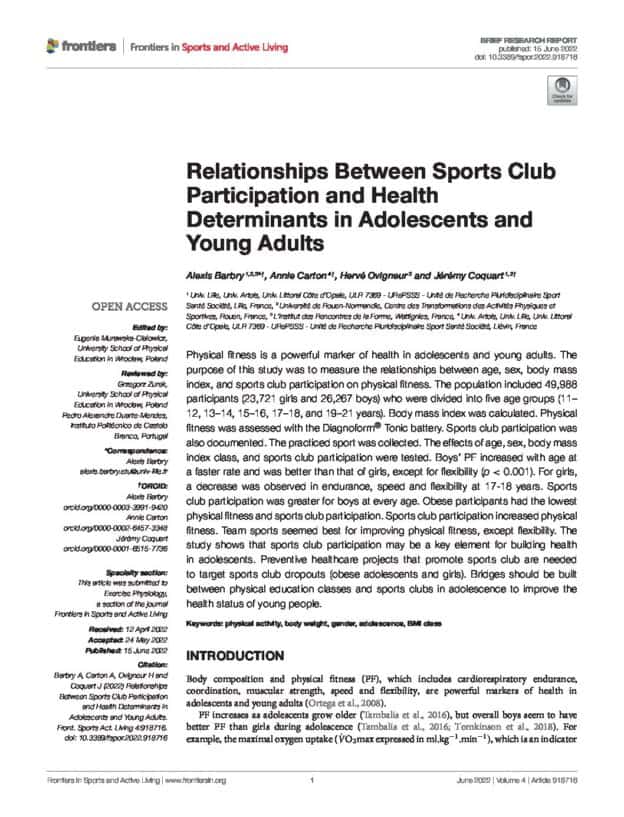Abstract
Physical fitness is a powerful marker of health in adolescents and young adults. The purpose of this study was to measure the relationships between age, sex, body mass index, and sports club participation on physical fitness. The population included 49,988 participants (23,721 girls and 26,267 boys) who were divided into five age groups (11–12, 13–14, 15–16, 17–18, and 19–21 years). Body mass index was calculated. Physical fitness was assessed with the Diagnoform® Tonic battery. Sports club participation was also documented. The practiced sport was collected. The effects of age, sex, body mass index class, and sports club participation were tested.
Boys’ PF increased with age at a faster rate and was better than that of girls, except for flexibility (p < 0.001). For girls, a decrease was observed in endurance, speed and flexibility at 17-18 years. Sports club participation was greater for boys at every age. Obese participants had the lowest physical fitness and sports club participation. Sports club participation increased physical fitness. Team sports seemed best for improving physical fitness, except flexibility. The study shows that sports club participation may be a key element for building health in adolescents. Preventive healthcare projects that promote sports club are needed to target sports club dropouts (obese adolescents and girls). Bridges should be built between physical education classes and sports clubs in adolescence to improve the health status of young people.



Responses